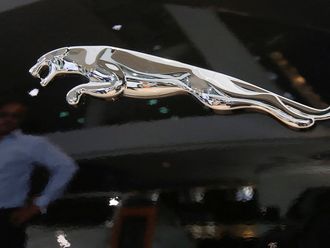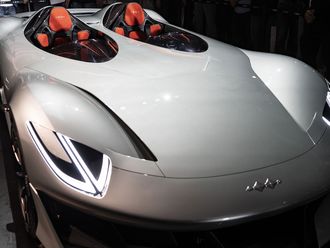
Dubai: The business of gold and glitter is going through a transition in the UAE. The bigger jewellery houses are gradually moving away from just selling imported gold jewellery to actually making them here.
Kalyan Jewellers, which entered this market over two years ago, confirmed that its second jewellery design and manufacturing unit in the UAE will be operational within weeks.
The facility, with a capacity of 200 kilograms a month, adds to an existing 250 kilogram-a-month production unit. Both are located in Sharjah.
“Between these two facilities, we will be in a position to meet the bulk of the inventory needs for our stores in the Gulf,” said Ramesh Kalyanaraman, executive director. “And they will come in particularly handy when we launch in Saudi Arabia. The Saudi launch is taking a bit more time than we anticipated, but when we do, the plan is to have 10-12 stores.”
A local production facility also removes the costs and customs duty involved in importing jewellery pieces. At a time when consumers are getting extra sensitive about volatile gold prices, anything that can reduce the showroom prices can come in handy for retailers.
Kalyan is still in the build up phase of its retail expansion in the Gulf. Last week it added three stores in the UAE, and the first one is due to open in Oman. That only leaves Saudi Arabia as the last major piece to fit in.
The brand currently operates 28 stores in the Gulf and about 90 in India.
“Our forecast is that gold prices will remain between $1,300-$1,400 [Dh4,774-Dh5,142] an ounce for now,” said Kalyanaraman. “At these levels, I believe the gold component could grow at between 4-5 per cent at the retail level in the next two years. But demand for studded jewellery could be in the range of 10-12 per cent during the same period.
“Consumers are cautious about what they want to spend on and the frequency, but gold is far from being in a state of decline.
“What’s happening more and more is that much of the buying is happening around the major events, such as festivals, the holidays or when gold prices suddenly see some heavy action. What’s not happening is the consistent month-on-month buying pattern. But the industry can adjust to that.”
It is this belief that has Kalyan looking at a potential entry into the US market. Other UAE-based jewellery retailers such as Joyalukkas are already in that space as they bid to open up more organic growth opportunities.
“Wherever there’s a large Indian resident base, it makes sense for an Indian jewellery retailer to be there,” said Kalyanaraman. “Apart from some of the US cities, Singapore and Malaysia are also in our plans.”
As for its India operations, the retailer believes that with the recent changes in the sales tax regime, organised jewellery operators are in with a definite advantage.
The Goods and Services Tax (GST) became effective on July 1, and on gold and jewellery transactions it is set at 3 per cent against the 2.25 per cent sales and excise tax earlier.
“Though marginally the tax component has gone up, it will bring see organised retailers gaining marketshare,” said Kalyanaraman. “Before GST, the unorganised sector was accounting for 80 per cent of gold purchases in India. By this year-end itself, I think that will drop to 70 per cent because shoppers will want to be sure about their paperwork for the tax authorities. No longer will we see cases of under-invoicing and the like, which is where the unorganised players used to have an advantage.
“India is a market where consumer tastes can change every 40km or so. But some things are unlikely to change — gold is not going to turn into a fashion accessory for a good majority of Indian shoppers. It’s something deeper as part of their culture... and will remain so.”












